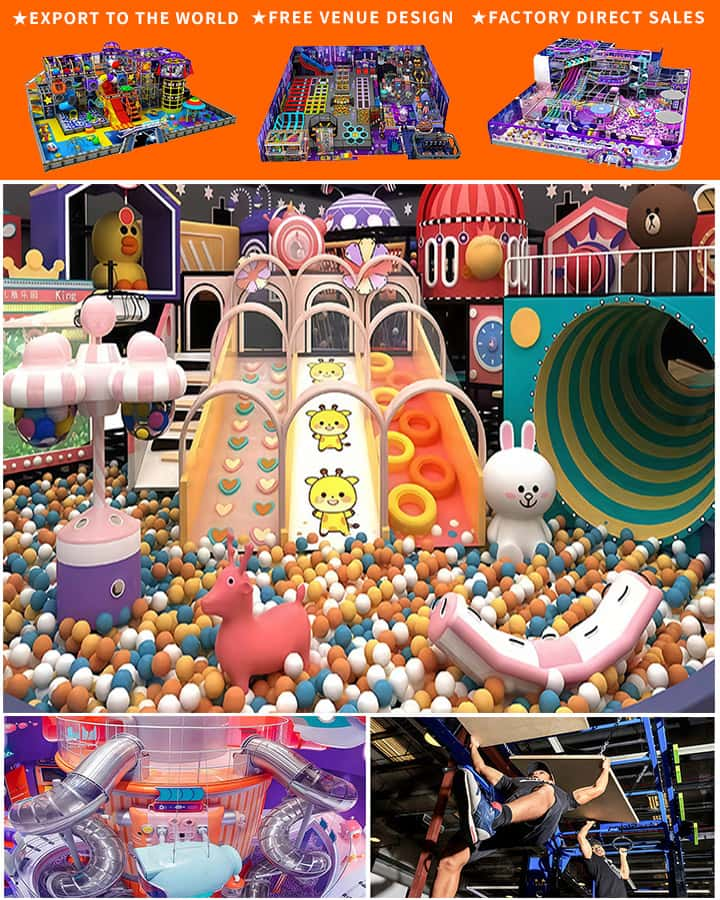Starting a children’s indoor playground can be an exhilarating and rewarding venture, offering a place where kids can play safely while parents find respite. However, it requires meticulous planning and execution to ensure success. Here are some key steps to guide you through the process.
1. Research and Plan Before diving into the business, conduct thorough market research. Understand your target audience, their needs, and the local competition. Visit existing indoor playgrounds to gain insights into what works and what doesn’t. Create a detailed business plan outlining your objectives, budget, and strategies for marketing and operations.
2. Choose the Right Location Selecting an optimal location is crucial. Look for a venue that is easily accessible, has ample parking, and is situated in a family-friendly area. Consider visibility and foot traffic; a spot near shopping centers or residential areas can be advantageous. Ensure that the space complies with local zoning laws for child-oriented businesses.
3. Design a Safe and Engaging Space
 Design plays a significant role in attracting young visitors and ensuring their safety. Collaborate with a professional designer who specializes in creating engaging environments for children. Incorporate diverse activities such as climbing structures, ball pits, slides, and interactive games. Use non-toxic materials and ensure that all equipment meets safety standards.
Design plays a significant role in attracting young visitors and ensuring their safety. Collaborate with a professional designer who specializes in creating engaging environments for children. Incorporate diverse activities such as climbing structures, ball pits, slides, and interactive games. Use non-toxic materials and ensure that all equipment meets safety standards.
4. Obtain Necessary Permits and Insurance Navigating the legal requirements is essential to avoid any future complications. Apply for the required business licenses and permits from local authorities. Additionally, secure comprehensive insurance coverage to protect against potential liabilities, including general liability and property damage insurance.
5. Invest in Quality Equipment The core of any indoor playground is its equipment. Invest in high-quality, durable, and safe play structures that cater to various age groups. Regularly inspect and maintain the equipment to ensure it remains in excellent condition and adheres to safety regulations.
6. Staff Training and Management Hire friendly, responsible staff who are good with children. Conduct regular training sessions to ensure they understand safety protocols, emergency procedures, and customer service standards. Effective management and a well-trained team are vital for creating a positive experience for both parents and children.
7. Focus on Marketing and Community Engagement Market your indoor playground effectively by leveraging social media, local advertising, and community events. Create a welcoming atmosphere with themed events, birthday party packages, and loyalty programs. Engage with the community through partnerships with schools, parent groups, and other family-centered organizations.
8. Ensure Cleanliness and Safety Protocols Maintaining a clean and hygienic environment is critical, especially given health concerns like germs. Implement strict cleaning schedules for all equipment and facilities. Clearly communicate safety rules and guidelines to parents and children to foster a culture of safety.
9. Monitor and Adapt Once your indoor playground opens, continually monitor its performance. Seek feedback from customers to identify areas for improvement. Stay updated with industry trends and new technologies to keep your offering fresh and exciting.
Conclusion Starting a children’s indoor playground involves careful planning, investment, and a deep understanding of your target market. By following these steps, you can create a fun, safe, and profitable environment that brings joy to children and peace of mind to parents. With dedication and creativity, your indoor playground can thrive and become a beloved part of the community.




